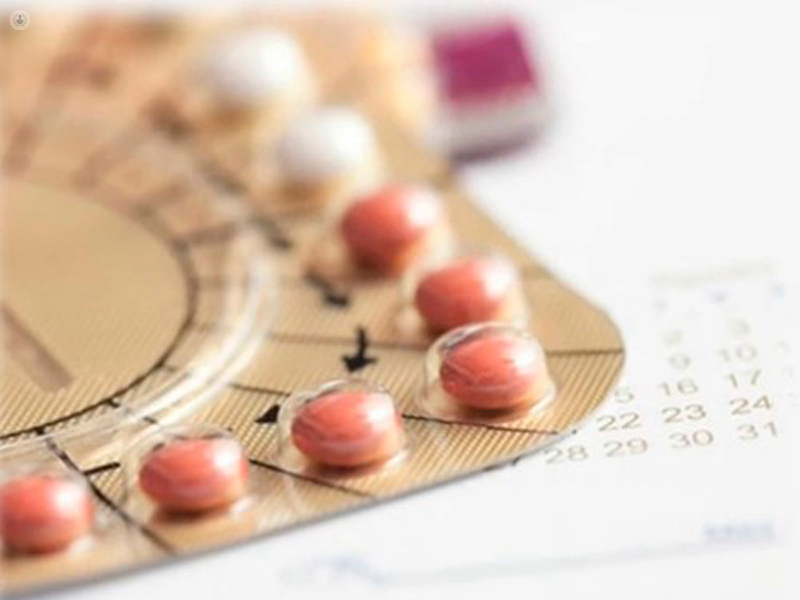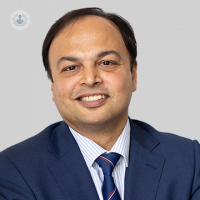HRT: what are the benefits and risks?
Autore:The choice of whether or not to take hormone replacement therapy (HRT) is different for each person. To help you make the most of your consultation with your doctor, we’ve asked experienced gynaecologist and fertility consultant Mr Parijat Bhattacharjee for an overview of the benefits and risks of HRT, as well a guide on how it can be taken – and how long you can take it for:

How hormone replacement therapy works
All women are born with a finite number of eggs. They are gradually used up from puberty onwards and reduce significantly in number and quality by around 40 years of age. This is because there is gradual damage to the DNA in the eggs, which occurs over the woman’s entire life.
This results in a decrease in fertility and pregnancy complications like miscarriage and chromosomal abnormalities. By age 50, in most cases there are no eggs left.
The cells surrounding the eggs in the follicle (sac containing eggs) produce the main female hormone, oestrogen. Oestrogen has many effects:
- It thickens the lining of the womb every month to help implantation and pregnancy (and shedding as period if pregnancy does not happen in a particular cycle),
- It also helps maintain many aspects of physical and mental health, from preventing bone loss to maintaining a healthy vagina and waterworks.
Lack of oestrogen at menopause (defined as 1 year of no period generally after 45 years of age), therefore may lead to such problems.
Read more: Understanding the menopause
Hormone replacement therapy (HRT) aims to replace the oestrogen (and sometimes other similar hormones) to alleviate problems and symptoms.
Hormone replacement therapy has both benefits and risks, and it’s important to understand both and make a decision that is right for you:
The benefits of HRT
- HRT relieves vasomotor symptoms such as hot flushes and night sweats. These are common in women going through menopause and for a few years after menopause. In rare cases, they can continue many years afterwards.
- HRT prevents dryness and soreness of the vagina , including during intercourse. Testosterone, the male hormone, may also help with problems with libido.
- All types of HRT can help with urine problems such as increased frequency or recurrent urine infections.
- HRT may also help prevent bone loss , particularly in women who have a higher risk of fractures from osteoporosis (weak, thin bones).
- HRT may help with low mood and anxiety sometimes associated with menopause. However, HRT cannot be used to treat depression.
It’s worth pointing out that there are also things you can do yourself to tackle the symptoms of the menopause. Healthy diet (high fibre, low fat, low sugar), regular exercise, reducing alcohol, caffeine and smoking and relaxation are likely to help with mood and many other symptoms and health issues associated with menopause, without the side effects of HRT.
What are the potential risks of HRT?
- Breast cancer risk may be slightly increased if used over a prolonged period (greater than 5 years), particularly if progesterone also needs to be added to the oestrogen (in women who have a uterus). However, it goes back to the level of the population at that age a few years after stopping
- Risk of venous thrombosis (clots in legs or lungs) or stroke may increase with the tablet form but patches or gel or a specific type of progesterone (micronized) does not increase the risk.
- The risk of heart disease is not increased – in fact, it may decrease if started early soon after menopause.
In any case, in a healthy individual less than 60 years of age, the risk with most HRT is low.
How do I know which type of HRT is right for me?
There is no "one size fits all" for HRT and this is evident from the wide variety of types and combinations available. The type and dose have to be individualised by the doctor in consultation with the patient taking it.
Oestrogen is of course needed to replace the deficiency of the hormone. However, excess oestrogen without the hormone progesterone can lead to uncontrolled and sometimes abnormal growth of the endometrium (lining of the womb) increasing the risk of developing cancer of the womb. Therefore, women who did not have a hysterectomy (removal of the womb) for any reason, will need to take at least 12 days of progesterone added to the oestrogen every month, to reduce this risk.
How is oestrogen taken?
Oestrogen can also be given as tablets, cream or ring inserted/ applied vaginally for local symptoms like dryness of vagina or urine problems.
Implants inserted under the skin are not available at present.
Usually, you’ll start at the lowest dose of oestrogen and increase if necessary.
If you are still having periods (perimenopausal as opposed to menopausal, when you haven’t had a period for at least 1 year), sequential HRT is prescribed (cyclical) to have a bleed. After menopause, it is changed to continuous (no periods).
The most common route used is oral, taken as tablets, but transdermal (through the skin) has less risk of clots in veins and stroke. These comes as patches (generally changed twice a week) or gel (applied daily).
How is progesterone taken?
Progesterone is usually given as oral tablets but can also be found as patches or even the coil (Mirena).
Other medications
- There are other hormonal medications, like Tibolone, that are available. This has weak hormonal activity and can be used after menopause.
- Bioidentical hormones are unregulated and therefore not recommended.
- There are some other non-hormonal preparations that may help with some of the symptoms, but these are often not prescribed because they are not standardised. These include isoflavones and lignans (e.g. Black Cohosh).
- Vaginal moisturisers and lubricants can help with symptoms of dryness and painful intercourse.
As well as medication, non-drug therapies such as acupuncture, cognitive behaviourial therapy (CBT), and yoga may help with some of the symptoms.
How long should I stay on HRT?
The type, dose and route needs to be individualised by the doctor, and ideally the lowest dose be used for the shortest period of time.
There should be no arbitrary limit placed on the duration of use of HRT in an otherwise healthy woman, at least up to 60 years of age. If continued beyond 60 years, patches or gel are better than tablets.
Most women will take HRT for a short period of time (a few months to 2-3 years) to tide over the symptoms of hot flushes or night sweats.


